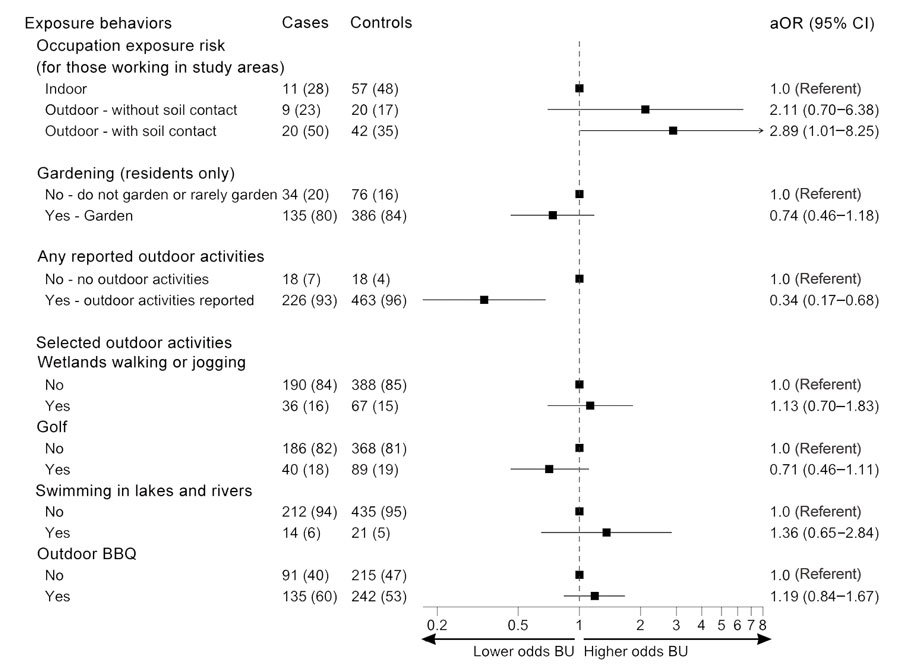Volume 29, Number 10—October 2023
Research
Comprehensive Case–Control Study of Protective and Risk Factors for Buruli Ulcer, Southeastern Australia
Figure 5

Figure 5. Odds of developing Buruli ulcer according to potential outdoor exposures in comprehensive case–control study of protective and risk factors for Buruli ulcer, southeastern Australia. Potential outdoor exposures are shown for case-patients and control participants as no. (%). Odds ratios (adjusted according to age and sex) and 95% CIs are indicated. aOR, adjusted odds ratio; BBQ, barbeque; BU, Buruli ulcer.
1These senior authors contributed equally to this article.
Page created: July 19, 2023
Page updated: September 20, 2023
Page reviewed: September 20, 2023
The conclusions, findings, and opinions expressed by authors contributing to this journal do not necessarily reflect the official position of the U.S. Department of Health and Human Services, the Public Health Service, the Centers for Disease Control and Prevention, or the authors' affiliated institutions. Use of trade names is for identification only and does not imply endorsement by any of the groups named above.